Are you a Quiet Speculation member?
If not, now is a perfect time to join up! Our powerful tools, breaking-news analysis, and exclusive Discord channel will make sure you stay up to date and ahead of the curve.
Every year has its ups and downs, and so does every card. While this year blessed Modern with untold diversity, a few cards seem to have been left by the wayside. This article explores some of them in detail, reasoning why certain spells are perhaps best left in 2017.
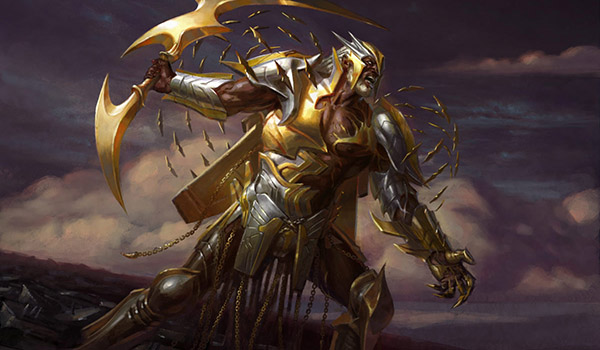
#5: Kalitas, Traitor of Ghet
Amonkhet brought us Vizier of Remedies, which in turn begot a revitalized Collected Company deck in Counters Company. While the Vizier-Devoted Druid combination doesn't interact with the graveyard on its own, early versions of the deck also included Abzan Company's Viscera Seer plus Kitchen Finks package. The rise of Company decks left many BGx midrange players in my circles looking to Kalitas, Traitor of Ghet, a walking [mtg_card]Rest in Peace[/mtg_cawrd] with additional applications, as their curve-topper.
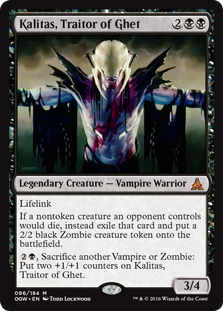 Counters Company pushed on, though, and away went the BGx decks altogether. Their fall from grace is one reason for Kalitas's retirement, but the others are present in its own text box: the creature costs four mana, which is more in Modern than ever thanks to Fatal Push; it doesn't cast a spell upon resolution; and it frankly looks tiny in the face of Tasigur, the Golden Fang and Death's Shadow, the creatures that dominate black midrange decks today.
Counters Company pushed on, though, and away went the BGx decks altogether. Their fall from grace is one reason for Kalitas's retirement, but the others are present in its own text box: the creature costs four mana, which is more in Modern than ever thanks to Fatal Push; it doesn't cast a spell upon resolution; and it frankly looks tiny in the face of Tasigur, the Golden Fang and Death's Shadow, the creatures that dominate black midrange decks today.
BGx also lost an important showcase for Kalitas in the mirror, which in its time spoke to the Vampire's power during board stalls and attrition wars. Without creature-focused control games playing out as much, Kalitas loses much of its luster. And BGx has more pertinent options, recently employing Goblin Rabblemaster in its haymaker slot to tear through big-mana decks.
All in all, I think Kalitas is due to go the way of the Siege Rhino; that once-ubiquitous four-drop is now little more than a fringe tech choice in certain builds of BGx.
#4: Master of Waves
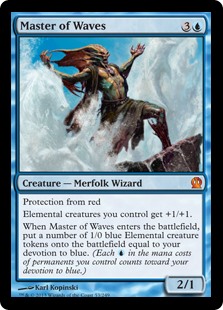 2017 saw Merfolk carve out a genuine niche for itself for the first time in years, preying on color-hungry Shadow decks and creature-based Tron variants alike. But the deck's always been soft to removal-packed strategies like Jeskai and Mardu, which it can still beat with a critical mass of early beaters.
2017 saw Merfolk carve out a genuine niche for itself for the first time in years, preying on color-hungry Shadow decks and creature-based Tron variants alike. But the deck's always been soft to removal-packed strategies like Jeskai and Mardu, which it can still beat with a critical mass of early beaters.
Enter Kumena's Speaker, a second one-drop with which to compliment Cursecatcher, and Merfolk Branchwalker, a close-enough variation on Merfolk's best card, Silvergill Adept. These creatures up the deck's focus by cementing its aggro Plan A, incidentally improving tempo plays like Harbinger of the Tides and Spreading Seas. Plus, Botanical Sanctum renders a green splash rather painless.
These powerful new toys of course demand space, in this case often paid for by trimming Master of Waves. Master's worse now for a lot of reasons: Lightning Bolt sees considerably less play than it used to; Modern players play more heavy-duty removal spells such as Path to Exile to deal with delve threats and Eldrazi creatures; Fatal Push now exists to one-for-one it cleanly. Besides, Master does little on a board opponents have already dismantled, and nothing in matchups too fast for its steep mana cost. Even the matchups it once dominated, like BGx Rock, now boast not just Push, but Liliana, the Last Hope as easy outs.
Master still generates tons of pressure for the one-card investment, and I doubt we'll see it vacate the archetype completely. But Merfolk lists have already begun running the Wizard as just a one-of, and I see that trend stretching into the new year.
#3: Mirran Crusader
 One of the year's biggest stories was the breakout success of Mirran Crusader, and to a lesser extent Chameleon Colossus, as Death's Shadow cemented itself as Modern's archetype-to-beat. These cards essentially brickwalled the entire deck, which ran no ways to remove them and generally played to a combo finish with Temur Battle Rage once one hit the table.
One of the year's biggest stories was the breakout success of Mirran Crusader, and to a lesser extent Chameleon Colossus, as Death's Shadow cemented itself as Modern's archetype-to-beat. These cards essentially brickwalled the entire deck, which ran no ways to remove them and generally played to a combo finish with Temur Battle Rage once one hit the table.
Since Bryan Coval's Invitational win with Death & Taxes, some Grixis Shadow decks have begun packing a Lightning Bolt to deal with Crusader and other random creatures. This change indicates a greater metagame awareness among Modern players, providing a tangible example of format adjustment. This adjustment has not proven kind to Crusader—by now, Modern has figured out how to beat Death's Shadow, driving down the card's meta share; Shadow decks largely migrated from Jund to the more Crusader-resilient Grixis; Crusader kind of sucks against every other deck, ever.
The card still seems popular as a one- to two-of sideboard call in Humans, but old habits die hard, and I doubt the little Knight that could shows his face much in 2018. Chameleon Colossus I'm more optimistic about, as the card combines with Summoner's Pact to efficiently plug a major matchup hole for RG Valakut.
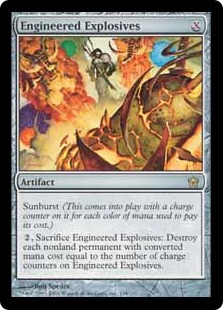 #2: Engineered Explosives
#2: Engineered Explosives
If you happened to be sitting on a bunch of Engineered Explosives heading out of 2016, you done good this year. And on that note, get out now. Explosives exploded in price as midrange decks sought ways to hedge at once against both Jund Shadow and the aggressive Zoo decks that supposedly beat them (hindsight: they didn't). We can't fault them—Explosives is a heck of a flexible removal spell, and its adoption had worked wonders for Bant Eldrazi.
By now, Bant has fallen deeply out of favor compared with Eldrazi Tron. And more importantly, Modern has returned to its tempo-rules business-as-usual, wherein flexibility doesn't hold a candle to raw efficiency. With Push in play, more decks have access to better removal spells, which works against Explosives in two ways: fewer decks need Explosives for coverage alone, and the decks Explosives was played to hate out have sharply decreased in share thanks to the presence of Fatal Push.
#1: Become Immense
The number one spot goes to a card that owes its downfall almost entirely to the Gitaxian Probe ban. Probe both enabled Become Immense directly by filling the graveyard and ensured a clear coast for the pump spell's activation, making the pair a deadly duo, especially in Infect and Death's Shadow Zoo.
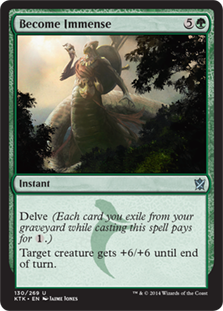 Of course, Become Immense generated buzz this year independent of Probe in the RG Hollow One deck. There, it threw back to Death's Shadow Zoo with Monastery Swiftspear and Street Wraith to produce eight or more damage out of nowhere, and combined with Temur Battle Rage to end games on the spot. But as more players began experimenting with Hollow One, Immense's weaknesses in the shell became apparent—it softened the deck to instant-speed removal, for instance, and overall took up too much space as a full package compared with other possible engines.
Of course, Become Immense generated buzz this year independent of Probe in the RG Hollow One deck. There, it threw back to Death's Shadow Zoo with Monastery Swiftspear and Street Wraith to produce eight or more damage out of nowhere, and combined with Temur Battle Rage to end games on the spot. But as more players began experimenting with Hollow One, Immense's weaknesses in the shell became apparent—it softened the deck to instant-speed removal, for instance, and overall took up too much space as a full package compared with other possible engines.
Immense may pop up from time to time in pump-focused aggro-combo strategies. But I'm not sold on these right now, which goes for Infect as well (although I do think that's the best of the bunch). Without Probe to break it open, I doubt the card ever finds a forever home as a four-of in a Tier 1 deck. That's not all on Immense, either; Temur Battle Rage itself synergizes better with existing shells while providing significantly more bang for buck, leading me to believe it's often just superior when it comes to gracing aggro decks with a combo dimension.
Old 2 New
So that's it for my rundown of the year's biggest losers. In truth, the Modern metagame had a fantastic year—Fatal Push has greatly diversified the number of playable creatures in the format, and with them, the amount of playable decks. Any of the format's fringe-played cards can have a breakout weekend, and most decks inhabit some sort of niche; onlookers have trouble arguing with Wizards's constant stance that Modern is wide-open. It'll be tough to outdo 2017, which saw increased Modern support and acclaim from professional players. But with a format community large enough, who knows what can happen? Happy new year, and see you all in 2018!



